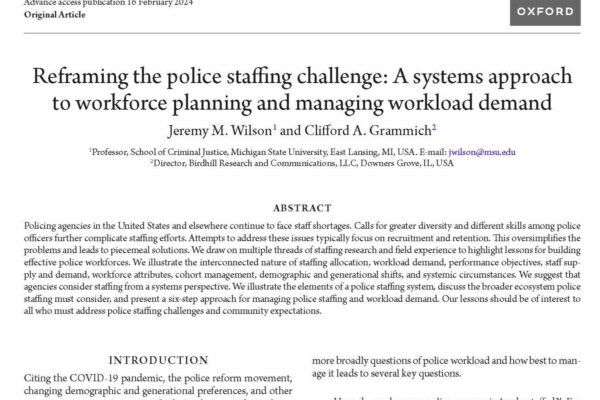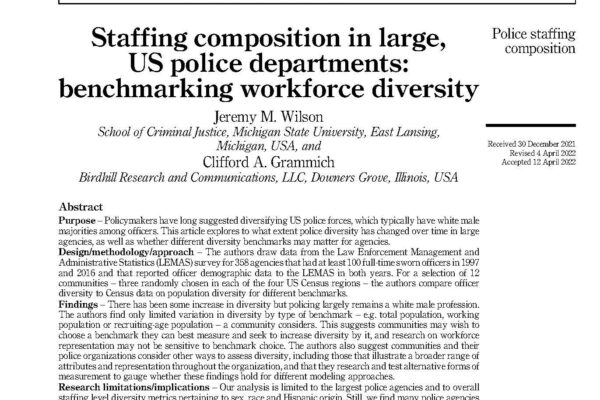Difficulties in recruitment and retention undermine the ability of U.S. police departments to maintain and diversify their workforces, particularly in light changing workloads and performance expectations. The police reform movement and recent increases in crime have highlighted these challenges, but other systemic and acute issues have also made staffing departments difficult. Attention to police staffing has been sporadic and uneven, with much discussion focused on recruitment. Given increasing attrition and that retention is more efficient than recruitment, there is considerable need for systematic examination of staff turnover and the development of strategies to bolster retention. To help fill this need, this manuscript assesses the landscape of retention research. We began by conducting a systematic search of four scholarly databases, which yielded 82 journal articles for investigation. We developed a codebook to isolate research features, which we captured in an SPSS dataset. We analyzed article content to illustrate key characteristics and lessons, including the types and characteristics of scholars and organizations who have produced the research, financial support for research, the characteristics of journals in which the work is published, substantive foci (including on diversity), methodological approaches and types of data, units of analysis, theoretical explanations and the causes and correlates of attrition, effects of turnover, and forms and effectiveness of retention strategies. We illustrate the nature and evolution of this work, identifying key features, strengths, weaknesses, lessons, and gaps in knowledge. We conclude with a discussion of the implications for police research and evidence-based workforce planning.
Police Retention: A Systematic Review of the Research. Policing: A Journal of Policy and Practice, Vol. 17 (Online Advance), 2023.
Featured Research

Reframing the Police Staffing Challenge: A Systems Approach to Workforce Planning and Managing Workload Demand
Policing: A Journal of Police and Practice

Police Recruitment and Selection: Resources And Lessons for Workforce Building
U.S. Department of Justice, Office of Community Oriented Policing Services

A Performance-Based Approach to Police Staffing and Allocation
U.S. Department of Justice, Office of Community Oriented Policing Services

Brand Protection and the Global Risk of Product Counterfeits: A Total Business Solution Approach
Edward Elgar Publishing
***WINNER OF THE AMERICAN SOCIETY OF CRIMINOLOGY DIVISION ON WHITE-COLLAR AND CORPORATE CRIME OUTSTANDING BOOK AWARD***

Staffing Composition in Large, US Police Departments: Benchmarking Workforce Diversity
Policing: An International Journal

